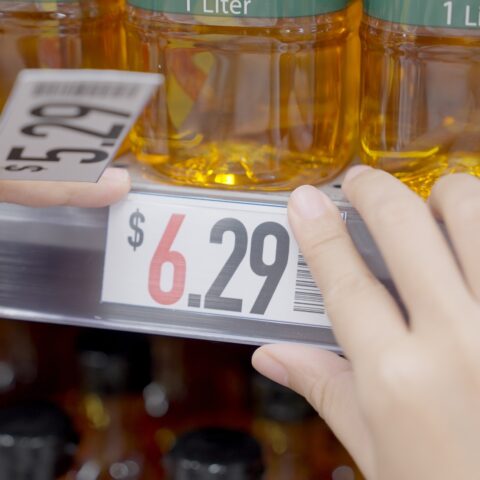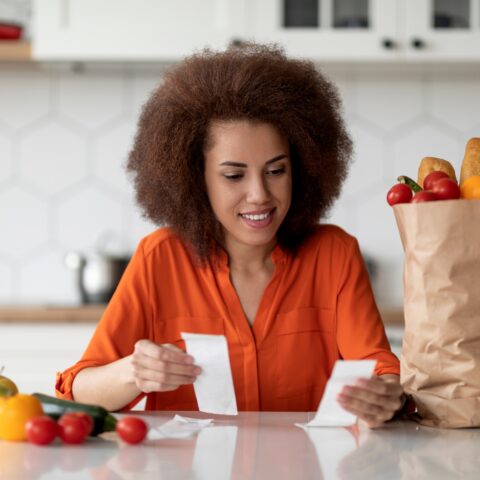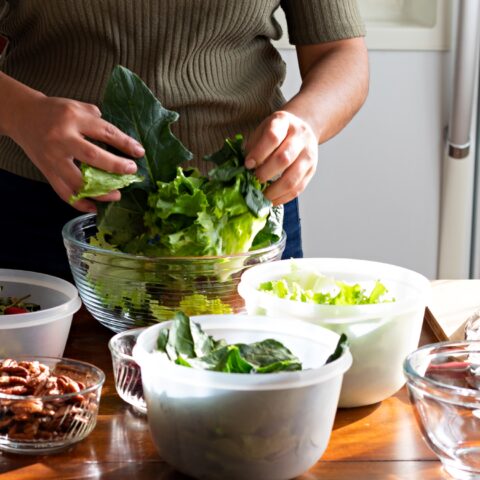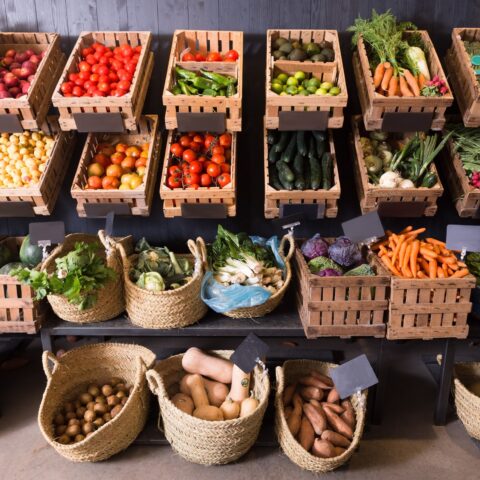How to Freeze Meat, Fish, and Produce
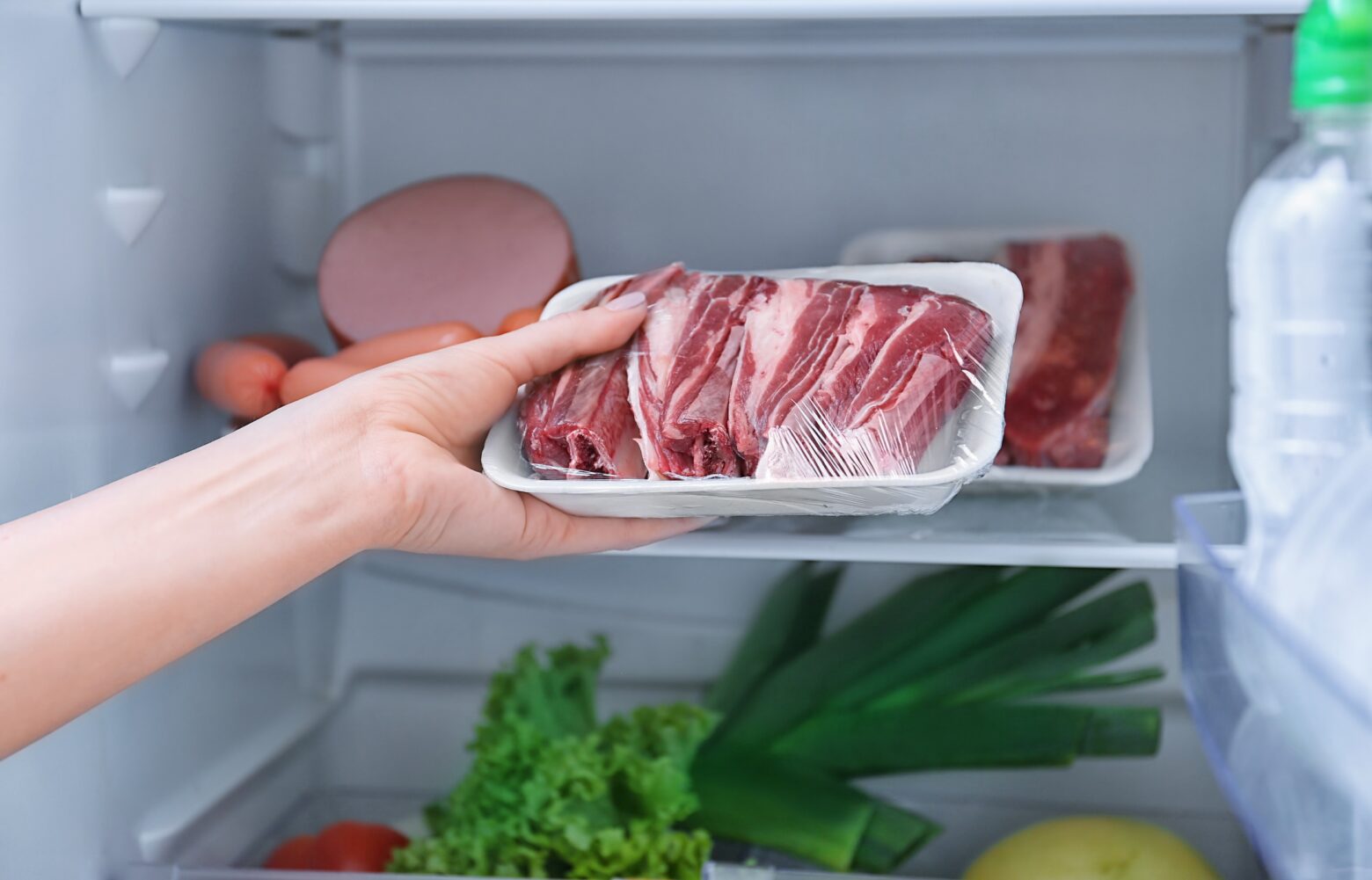
Nothing beats a fresh, crisp salad with a cilantro-lime marinated chicken breast, tossed with an assortment of leftover grilled veggies from last night’s barbecue for a healthy, balanced Paleo lunch on a hot summer’s day.
And the next day, perhaps some of those grilled veggies and leftover chicken find their way into a chilled soup puree simply by adding in some bone broth and topping with a dollop of homemade guacamole.
But by day number three, grilled chicken and veggies are starting to sound far from appetizing. While they’re still edible and nutritious, having been stored properly in the fridge, their appeal has dissipated to the point that they’re the last thing you’re craving.
You arrive at a crossroads: force-feed yourself, or toss it in the garbage and wear the wasting food badge. Thankfully there’s another prong to this fork: freezing.
How to Freeze Meats
Prepared, frozen foods and meals tend to be high in sodium, sugar, and a wide range of unfavorable additives, and preservatives. But, freezing meats, fish, and produce can be a healthy, handy part of your weekly Paleo regime, not to mention a huge savings in time, labor and cost.
While some of the flavor may be lost in the freezing process, it’s a good way to preserve the nutritional value and texture. In fact, it’s not the freezing process that actually changes the food, but the cooking that is often done beforehand and thawing afterward.1
Perishable foods should never be thawed on the counter, or in hot water and must not be left at room temperature for more than two hours.
From a health risk standpoint, don’t make the mistake of taking out a whole frozen chicken and letting it sit all day on the counter to defrost. Raw or cooked meat, poultry or egg products, as any perishable foods, must be kept at a safe temperature during the thawing process. While they’re safe indefinitely frozen, as soon as they begin to thaw and become warmer than 40° F, bacteria that may have been present before freezing can begin to multiply. As such, perishable foods should never be thawed on the counter, or in hot water and must not be left at room temperature for more than two hours.
Plan ahead and thaw in the refrigerator where the food will remain at a safe, constant temperature—at 40° F or below.2
With the cons of freezing almost negligible, we can safely incorporate the process and save ourselves a good amount of time by doing a once or twice weekly prep.
During this time, if we simply steam several types of veggies, bake, broil or grill a few proteins, wash our lettuces and so on, we end up at the end of the hour with many ready to eat options. Then, we can mix and match in order to create a nice variety of meals to eat right then and there, to go or to freeze! By portioning out foods that are completely prepared into single servings and then freezing, we also save on cost as this approach allows us to prepare larger quantities.
Isn’t fresh always best, though? Won’t freezing meats, fish, and produce cause the nutrient density to diminish? Yes…and no.
Of course, in an ideal world, we’d all eat fresh fish, grass fed meats and pasture-raised poultry with local, organic produce at every single meal, all the time. As soon as we get back to reality, however, it becomes very clear that for most of us, doing this every time we eat just isn’t practical. But which foods freeze best and which should avoid the icebox?
Best Foods to Freeze
- Proteins including grass fed meats, wild fish, pasture raised poultry, basically any Paleo friendly protein that’s part of your routine, aside from whole, raw eggs in the shell (scrambled eggs may pass the test), make good candidates for freezing.
- Keep your raw nuts in the freezer, too; they’ll stay fresh longer and due to their high fat content, can be eaten right as they are!
Foods Safe to Freeze, but May Change in Texture
- Fruits and vegetables with high water content will not freeze well (think frozen lettuce, cucumber or radish…no, thanks!).
- Salty fatty meats such as bacon, sausage, ham, hot dogs, ‘lunch meats’ and some fish do not last long in the freezer. The USDA only recommends freezing these items for 1-2 months. The salt causes fat to go rancid in the freezer.3 That said, these processed foods aren’t part of a regular Paleo Diet anyway.
But what to do if we find ourselves with too much food for one reason or another and some of it falls into the category of does not freeze well? There are still ways to prevent total waste.
1. Have a Plan
Make a menu and aim to use up the most perishable foods first, and stagger out the heartier ones to be eaten a few days later.
2. Be Creative
Balance out reinventing leftover proteins and keep them fresh by making them into a soup puree, mixing and matching with a fresh, crisp salad or a different type of veggie which can turn a boring meal into something totally different.
3. Refrigerator Surprise It
This is an approach I use quite regularly and began several years ago right before I left for vacation. I had frozen what was freezeable, but found I still had several odds and ends, like half an onion, parsley, part of a roast chicken carcass and so on. I threw them all into a Dutch oven with some leftover broth and created the first iteration of refrigerator surprise. A risky endeavor perhaps had the leftovers not tasted great, but much to my surprise, a tasty combo sans waste!
Freezing is definitely permitted on The Paleo Diet as a permanent part of your healthy regime. Allowing you to save on cost and time, these pros far outweigh any cons, and a highly recommended approach to balancing out the times when you can go fresh!
References
- “What Nutrients Are Lost or Destroyed by Freezing?” What Nutrients Are Lost or Destroyed by Freezing? N.p., n.d. Web. 09 June 2015.
- “FSIS.” The Big Thaw. N.p., n.d. Web. 09 June 2015.
- “The Best and the Worst Foods to Freeze for Long Term Storage.” Ready Nutrition. N.p., n.d. Web. 09 June 2015.
Nell Stephenson, B.S.
Nell Stephenson has been an advocate for The Paleo Diet since 2011, and is the co-author of The Paleo Diet Cookbook.
More About The Author
